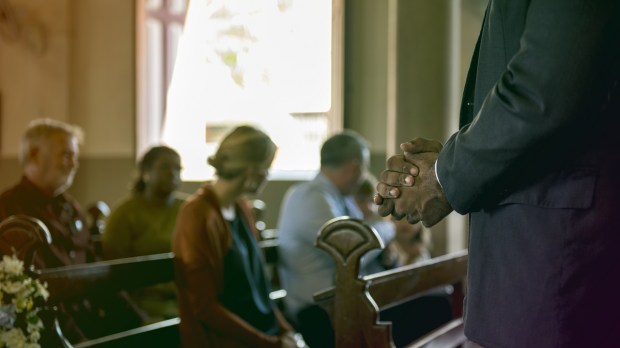Lenten Campaign 2025
This content is free of charge, as are all our articles.
Support us with a donation that is tax-deductible and enable us to continue to reach millions of readers.
A new survey from Pew Research Center is measuring how the pandemic affected attendance rates at religious services in the United States. One surprising takeaway from the study was that while in-person church attendance has yet to return to pre-pandemic levels, attendance is close to what it was when taking into account both in-person and virtual services.
Pew first inquired about the rates of attendance in the last month (November 2022), where it found that only 40% of US adults attended religious services. Broken down, 16% reported attending in-person, while 12% attended virtually and an additional 12% said they participated in both methods. The remaining 60% of respondents had not attended by either means.
When examining the rebound of in-person attendance from the lowest point in the beginning of the pandemic, the survey found that while there was a marked return, these rates have also leveled out. From July 2020 to November 2022, about 15% of respondents reported returning to in-person services, while a similar shift of 12% was seen in those who have stopped attending services virtually. Overall, between the two forms of attendance, participation in religious services only dropped from 41% to 40% in this timeframe.
When examined by age, those under 30 years old were found to be exactly in line with the previously mentioned totals of US adults, with 40% attending services in the last month and 60% declining to attend. The portion of young Catholics was only slightly higher, with 44% attending and 56% declining. The highest rates of young people attending religious services each month were seen in White evangelical Protestants (72%) and Black Protestants (69%).
As far as the change in the frequency of religious practice among Americans, a solid fifth (20%) say they attend less frequently than before the pandemic, while 7% reported attending more often. Thirty-one percent said they attend about as frequently as they always have, while 42% did not attend before the pandemic and continue to decline participation.
Catholics, however, did not line up exactly with these national averages.
Almost a quarter (24%) of US Catholics said they attend Mass less frequently than before the pandemic, while a greater portion than the national average (9%) say they attend Mass more frequently now. Thirty-eight percent reported attending Mass at the same rate both before and after the pandemic, and only 28% said they did not attend before or afterward.
Catholics were also found to be among the least likely to watch Mass online, with 62% reporting that they did not attend virtual Mass at any point over the last two years. Of the remaining respondents, 14% reported more frequently tuning into a virtual stream of the Mass, 7% reported viewing online services less frequently, and 16% said their attendance was about the same both before the pandemic and now.
When comparing the national average of religious service attendance of 2019 to that of 2022, a 3% drop was seen across the board, from 33% to 30%. Catholics were found to fall directly in line with these figures, falling from 37% to 34% in the last three years. There was no religious group that saw an increase in attendance between 2019 and 2022.
While a decline in religious service attendance was clearly seen in the last three years, the vast majority of respondents suggested that the pandemic has not changed their habits. Nearly 9 in 10 (87%) of Americans said they attend religious services at the same rate now as they did in 2019. Furthermore, 4% said they attend more frequently, while only 8% said they visit their house of worship less frequently.
Catholics closely reflected these results, with 84% reporting the same frequency of attendance now as they reported in 2019. In Catholic responses, 6% said they attend Mass more frequently than in 2019, while 9% said they attend less frequently now.



